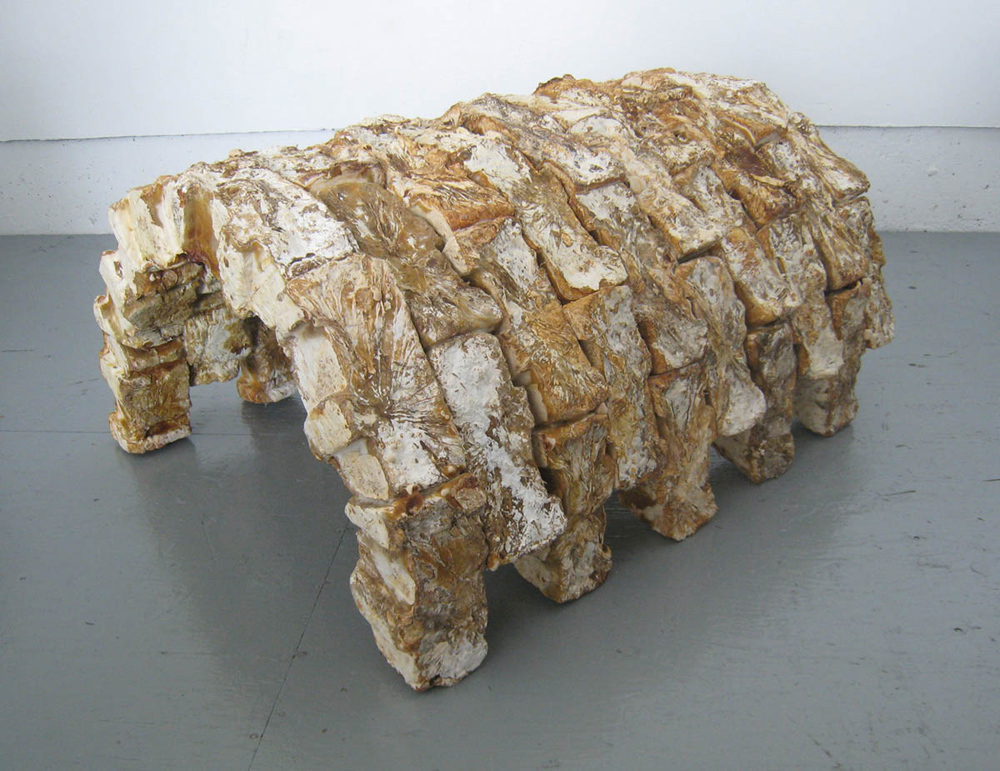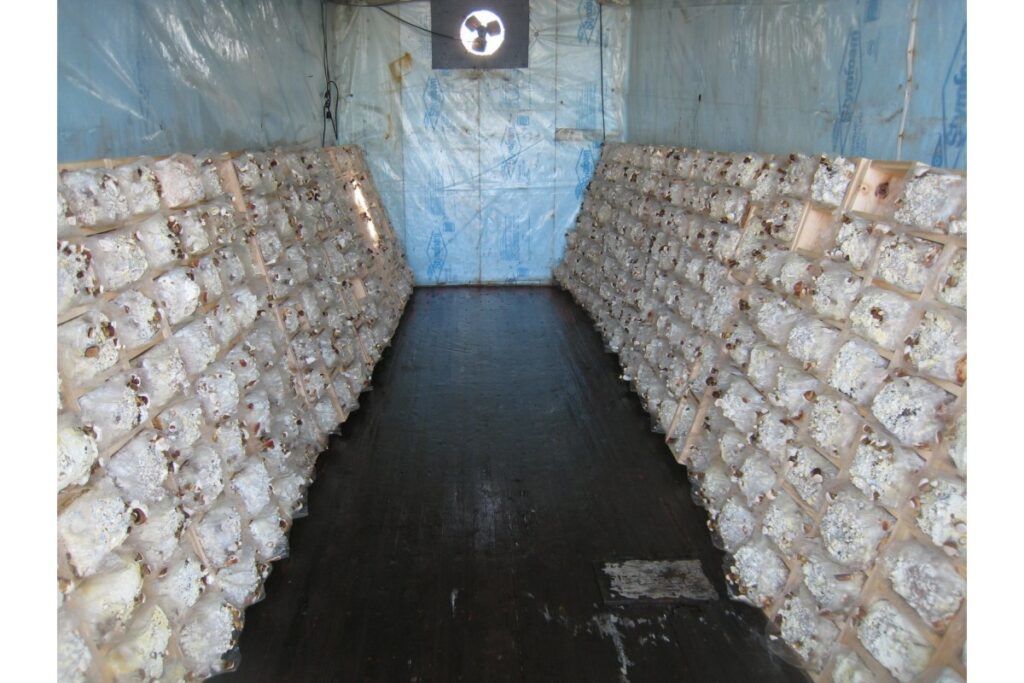Building with Mushroom Bricks

Most people pay attention to the part of the mushroom we see (and sometimes even eat) that grows above the ground – but what about the latticework of tendrils that intertwine inside the dirt from which they grow?

As it turns out, this malleable network can, per Philip Ross, “be used to form a super-strong, water-, mold- and fire-resistant building material. The dried mycelium can be grown and formed into just about any shape, and it has a remarkable consistency that makes it stronger, pound for pound, than concrete.” (via Inhabitat)

Stools and chairs are just the start – stone-like arches and eventually whole buildings may be yet to come. Like bamboo, the speed of growth and workability of the material make it a great candidate for locally-grown architecture, particularly in fungi-friendly climates. The strength of concrete, but easier to create and lightweight to boot – we have not seen the last of mushroom-based building technologies.

In an interview with Glass Tire, Ross explained how he got started with this idea.
“It was when I started to learn how to grow mushrooms. The initial impulse was to figure out how to grow reishi mushrooms as medicine, but when I started cultivating them and learned their growth habits, I immediately wanted to work with them as an art material– a casting material. It was a casting material that could be altered as it was setting. In casting, the amount of time you can work with the material before it sets is called ‘open time.’ In plaster that might be five minutes, and in cement it might be a couple hours. But with mushrooms, the open time is almost as long as you can keep them alive.”

“You can start to think about plasticity and forming things through much more subtle encouragement. The shapes can be controlled via the environment: the temperature, the position in relation to gravity, all these things that we take for granted, but are profound shapers of the world. You can begin to play with these factors and use them as non-physical tools of manipulation. Light, gravity, heat and the cleanliness of the environment determine the form, as opposed to a chisel or a drill or something like that.”